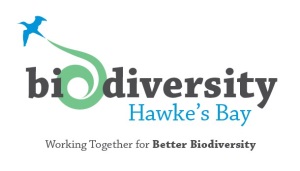I want to...
Current filter: Most popular
A to Z
Apply for a job
Biosecurity
Consents
Consultation
Contact Us
Environmental Data
Farmers Hub
Fix it or Report it
Information Request
Join an Event
Leasehold Land
Meetings
Rates
Water Metering
Have Your Say
Work underway to set Ecosystem priorities
Published: 21 February 2018

Deciding on the priorities to look after and enhance special ecosystem sites in Hawke’s Bay is well underway.
Hawke’s Bay Regional Council biodiversity staff have this week reported on the progress being made to prioritise work to protect the region’s important ecosystems.
The Biodiversity Strategy and its partner Action Plan have been developed by a wide range of people interested in seeing positive transformational change in biodiversity across the Hawke’s Bay region. However, the challenge is significant with large losses to biodiversity across New Zealand – and Hawke’s Bay is no different.
“Setting realistic priorities is critical to achieving the best outcomes with the funds our community entrusts to us. A clear set of priorities across the region will enable the coordination of all our varied community and agency efforts to realise the long term vision,” says Charles Daugherty, Interim Chair of the Hawkes Bay Regional Biodiversity Foundation.
Ecosystem-based conservation is an important part of the approach being taken. It means maintaining and restoring a full range of remaining habitats and ecosystems as a way to conserve species diversity and natural processes. This has become the mainstream approach to protecting native (indigenous) biodiversity, compared to species-based protection.
“To increase our knowledge of what ecosystems we have left in Hawke’s Bay and what needs protecting, the region has been mapped. We’ve identified 60 or so land-based ecosystem types in 500,000 hectares of indigenous areas,” says the Council’s Terrestrial Ecologist, Keiko Hashiba.
Of the sixty types, 22 are threatened – mostly lowland forest, coast and dune vegetation, braided river vegetation and wetlands.
Hawke’s Bay Regional Council has been working on Zonation – a robust planning tool to prioritise ecosystems. This produces the best set of sites for action by asking ‘of the remaining indigenous ecosystems, how much can we manage in a given timeframe?’
Setting priorities for restoring ecosystems will allow progress to be tracked regionally. It will also strengthen the alignment of agency and community work towards biodiversity outcomes, help direct the regional council’s funding allocation processes, and enable the Biodiversity Guardians and Hawke’s Bay Biodiversity Foundation to drive a much greater level of biodiversity recovery.
For more information:
This work was outlined before the Council’s Environment & Services Committee in a report titled: ‘HB Biodiversity Strategy Implementation – Ecosystem Prioritisation’
Regional Biodiversity Strategy, and Action Plan: https://www.hbrc.govt.nz/hawkes-bay/biodiversity/biodiversity-strategy/
Disclaimers and Copyright
While every endeavour has been taken by the Hawke's Bay Regional Council to ensure that the information on this website is
accurate and up to date, Hawke's Bay Regional Council shall not be liable for any loss suffered through the use, directly or indirectly, of information on this website. Information contained has been assembled in good faith.
Some of the information available in this site is from the New Zealand Public domain and supplied by relevant
government agencies. Hawke's Bay Regional Council cannot accept any liability for its accuracy or content.
Portions of the information and material on this site, including data, pages, documents, online
graphics and images are protected by copyright, unless specifically notified to the contrary. Externally sourced
information or material is copyright to the respective provider.
© Hawke's Bay Regional Council - www.hbrc.govt.nz / +64 6 835 9200 / info@hbrc.govt.nz


